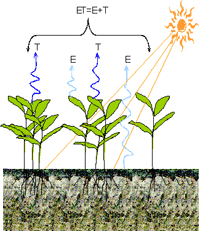Agricultural Research Division of IANR

West Central Research and Extension Center, North Platte
Date of this Version
2011
Abstract
Two hundred ninety-nine Angusbased, nulliparous heifers (253 ± 2 kg initial BW) from 3 production years were utilized to compare traditional postweaning dry lot (DL) development with a more extensive winter grazing system utilizing a combination of corn residue and winter range (EXT). Heifers developed in the DL were offered a common diet after the weaning period for 208 d in yr 1, 194 d in yr 2, and 150 d in yr 3 until breeding. Heifers developed in EXT grazed corn residue for 135 d in yr 1, 106 d in yr 2, and 91 d in yr 3, and then fed in the DL until breeding (yr 1) or grazed dormant winter grass for approximately 60 d before being fed in the DL (yr 2 and 3). All 3 years, heifers were estrus synchronized, with timed AI performed in yr 1. In yr 2 and 3, estrus was detected and those detected in estrus were artificially inseminated approximately 12 h later. Heifers were exposed to bulls 10 d after the last AI for 60 d while grazing summer pasture. During the winter grazing period, EXT heifers gained less (P = 0.01) BW than DL heifers and EXT heifers had lighter (P = 0.02) BW at breeding. Fewer (P < 0.01) EXT heifers reached puberty before breeding. Conception to AI was not different (P = 0.23); however, AI pregnancy rate tended (P = 0.08) to be less in EXT heifers. Final pregnancy rates were not different (P = 0.38) between treatment groups. Although EXT heifers had lighter (P = 0.02) BW at pregnancy diagnosis; however, they did compensate with greater (P = 0.05) ADG after breeding, resulting in similar (P = 0.22) precalving BW. Winter development system did not influence (P > 0.10) percentage of calving in the first 21 d, calf birth date, and calf birth BW, or dystocia score. Pregnancy rate after the second breeding season was not different (P = 0.56) between treatments. Heifer development using extended winter grazing reduced (P < 0.01) the cost of producing a pregnant heifer by $45 compared with DL.


Comments
Published in Journal of Animal Science 2011. 89:1595-1602. doi: 10.2527/jas.2010-3095